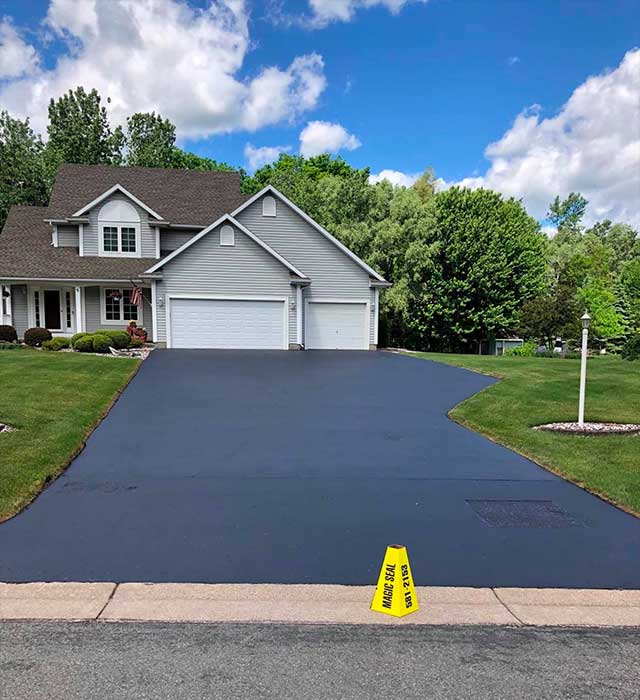Extend Pavement Life Expectancy: Innovative Cold Mix Asphalt Sealing
Extend Pavement Life Expectancy: Innovative Cold Mix Asphalt Sealing
Blog Article
Cold Mix Asphalt Vs. Hot Mix Asphalt: Which Is Right for You?

Make-up Differences
Cold mix and warm mix asphalts vary substantially in their make-up, with unique features that impact their efficiency and applications. Cold mix asphalt is produced by emulsifying the asphalt binder with water and an emulsifying representative prior to mixing it with accumulation. This approach permits the asphalt to be workable at reduced temperatures, making it excellent for short-term fixings and for use in cooler weather. Hot mix asphalt, on the various other hand, is manufactured at heats, generally between 300-350 ° F, which assists to attain much better compaction and a much more sturdy final product. The warm mix asphalt production process entails heating the accumulation and asphalt binder individually before integrating them at the asphalt plant.
In addition, cold mix asphalt tends to be less dense and more versatile than hot mix asphalt. This adaptability makes it better suited for areas with higher levels of motion, such as driveways or roads with rush hour. On the other hand, warm mix asphalt is understood for its high longevity and resistance to rutting and fracturing, making it a recommended selection for freeways and high-traffic roads where longevity is important.
Setup Refine Variations
The procedure of setting up cold mix and warm mix asphalt shows significant variations in their procedures and requirements. Cold mix asphalt, being a much more flexible product, can be used directly from the bag or container onto the pocket or damaged location. It needs minimal preparation job, such as cleansing the area and condensing the chilly mix with hand devices. This makes it a practical option for fast and momentary repairs. In contrast, warm mix asphalt requires an extra sophisticated installation procedure. It includes warming the blend to heats prior to laying it down on a correctly ready base. The preparation consists of compacting the base, using a tack coat, and utilizing heavy equipment like pavers and compactors for a smooth and resilient finish. As a result of the heating needs, warm mix asphalt installations are typically performed by professionals with specialized devices, making sure a more irreversible and structurally sound result.
Toughness and Long Life Factors
When taking into consideration asphalt choices, toughness and durability are important factors to evaluate for enduring pavement efficiency. Warm mix asphalt (HMA) is click this link known for its remarkable durability and long life.
In terms of longevity, HMA normally outshines CMA due to my company its premium stamina and resistance buildings. HMA pavements have a longer service life, needing much less frequent fixings and maintenance, which can translate to cost financial savings over time. Additionally, HMA sidewalks are more conveniently customizable to fulfill particular task requirements, better enhancing their longevity.
Expense Factors To Consider
Thinking about the economic implications is a critical aspect when examining the choice between warm mix asphalt (HMA) and cold mix asphalt (CMA) for pavement tasks. While the initial expense of warm mix asphalt is generally greater than that of cool mix asphalt, HMA frequently supplies an extra affordable option in the future due to its remarkable sturdiness and durability. HMA is understood for its capability to withstand heavy web traffic tons and harsh climate condition, decreasing the requirement for frequent repair services and upkeep. On the various other hand, cold mix asphalt is a lot more inexpensive in advance yet may require more regular patching and resurfacing, leading to higher maintenance costs with time.
Along with material internet costs, it's important to consider the expenses related to setup and maintenance when comparing HMA and CMA. HMA typically requires specialized tools and knowledgeable labor for proper setup, which can impact overall project prices. Conversely, CMA is easier to deal with and can frequently be applied utilizing simpler techniques, potentially reducing installment costs. Inevitably, the decision in between HMA and CMA must take right into account not simply the first expense but additionally the long-term economic ramifications to identify one of the most economical option for the specific pavement project.
Environmental Effect Comparison
Comparison of the environmental influences in between warm mix asphalt (HMA) and cold mix asphalt (CMA) exposes distinct differences in sustainability methods. HMA production requires high temperatures, leading to boosted power intake and greenhouse gas emissions.
Moreover, the usage of CMA often entails recycling existing asphalt sidewalk, advertising source preservation and decreasing the quantity of waste sent out to landfills. This recycling aspect better boosts the sustainability of CMA contrasted to HMA. On the whole, when considering the ecological influence, CMA becomes a more environmentally lasting option as a result of its lower energy demands, lowered emissions, and the capacity for reusing existing materials. By going with CMA over HMA, road construction jobs can contribute favorably to environmental preservation efforts.
Verdict
To conclude, the selection between cool mix asphalt (CMA) and hot mix asphalt (HMA) relies on various aspects such as structure, installment procedure, durability, durability, cost, and environmental effect. asphalt repair. While CMA offers a fast and cost-efficient remedy for small repair services, HMA ensures premium resilience and durability for heavy traffic locations. Think about these factors meticulously to establish which sort of asphalt is the ideal selection for your paving needs

Considering the economic effects is an essential facet when reviewing the option between hot mix asphalt (HMA) and cold mix asphalt (CMA) for pavement tasks. While the initial expense of hot mix asphalt is commonly higher than that of cool mix asphalt, HMA commonly offers a more economical service in the lengthy run due to its premium sturdiness and durability. asphalt repair.Comparison of the ecological impacts between warm mix asphalt (HMA) and chilly mix asphalt (CMA) discloses distinct distinctions in sustainability methods.In conclusion, the selection between cold mix asphalt (CMA) and warm mix asphalt (HMA) depends on various elements such as make-up, installation process, sturdiness, long life, expense, and environmental effect
Report this page